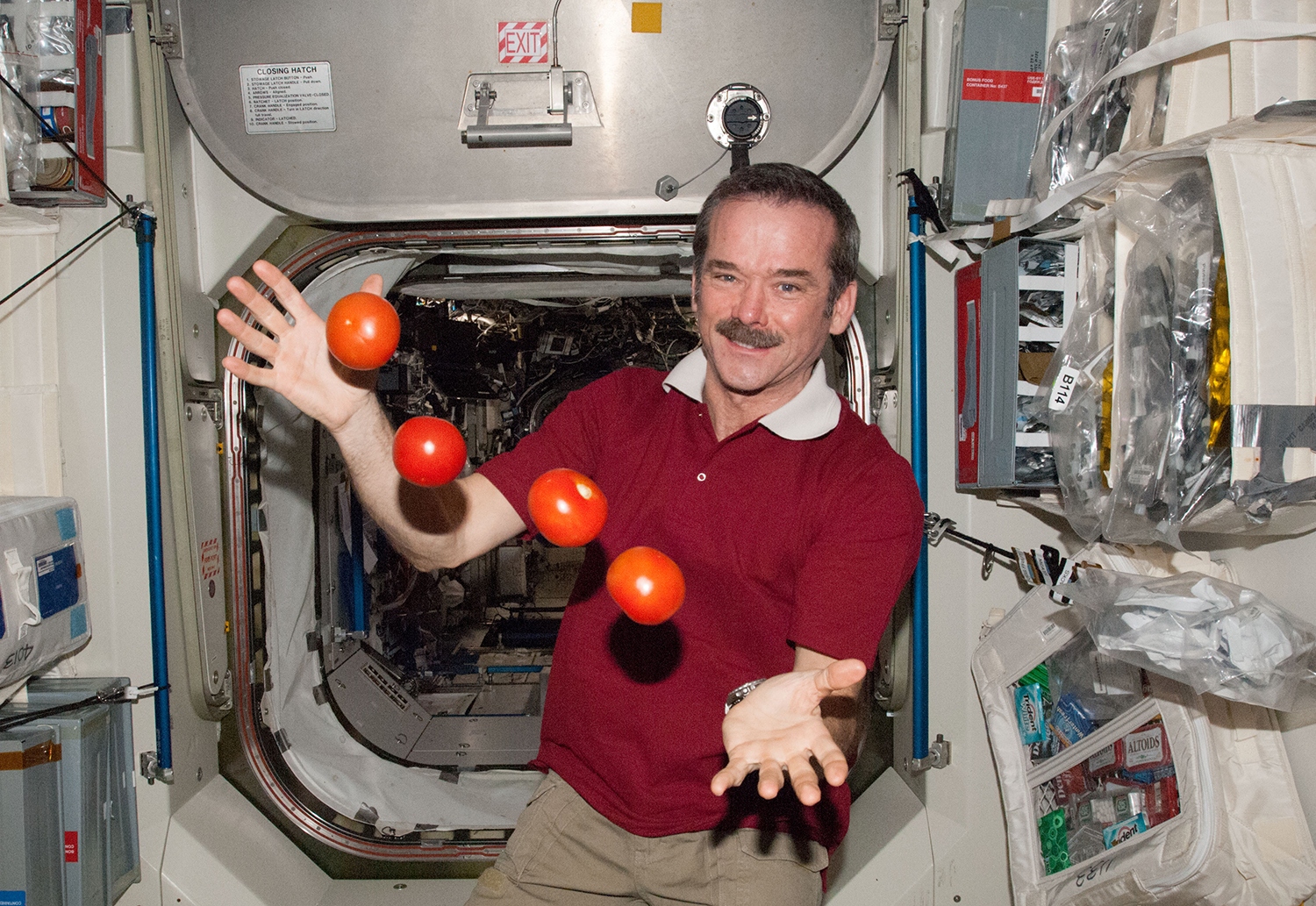Comments
- No comments found

Although the International Space Station may never earn a Michelin-star rating, its cuisine today is a far cry from the pureed meat — followed by a tube of chocolate sauce — Yori Gagarin historically choked down in 1961.
Space food has evolved past the era of “cubes and tubes.” Now, astronauts can look forward to sushi, freshly brewed coffee and kung pao chicken, even if it doesn’t taste quite the same as it does back home.
In the tense moments before setting foot on the Sea of Tranquility, Buzz Aldrin requested a moment of silence. He then reached for the first food and drink ever served on the moon — wine in a church chalice and a small piece of bread.
Performing this rite was about more than religion. It underscored humanity’s need to take a piece of us wherever we go and that food would always be about more than nutrition. In the early days of space exploration, scientists tried to pare entrees down to their elemental form — a package of calories, vitamins and protein with little regard to culture.
Food serves a psychological need, too. Astronauts on the 1962 Mercury mission lamented that they couldn’t see or smell their food because it was packaged in metal tubes. The powdery and viscous textures proved unappetizing.
Crew members also struggled to rehydrate their freeze-dried meals and disliked collecting the leftover crumbs, which scattered like birdshot aboard the space capsule once a package was opened. These were just a few signs that something needed to change.
The concept of taste was also put on the back burner until it went up in smoke. In the ‘60s-era of spaceflight, nutritionists worried that spices would overstimulate astronauts’ digestive tracts, so meals were very bland — so bland that pilot John Young snuck an illicit corned beef sandwich onto the Gemini III. NASA chastised him for the contraband but couldn’t quite blame him.
Part of the reason food tasted so plain is that your sinuses get stuffy in space. There’s no gravity to help move congestion down your throat or out your nose.
Instead, mucus takes up residence behind your eyes like a permanent head cold, leading to the same diminished ability to smell and taste as it does on Earth. Pair that with an unseasoned, powdered calorie cube and you’ve got a recipe for milquetoast.
Scientists now know that bold flavors have no unwanted effects on astronauts — for the most part, anyway. For whatever reason, the smell of certain foods can trigger a gag reflex among some crew members, with cream sherry being an infamous culprit. However, most meals, from caviar to tarator, are bold on the tongue and easy on the stomach. Sriracha is a favorite on the ISS.
Food science is still a science, and nutritionists carefully craft onboard meals to help astronauts meet their daily nutritional needs. For example, they ensure that crew members don’t eat more than 2,300 milligrams of sodium per day, which is the 100% daily value a person should consume. However, they have many more tools to work with than did nutrition experts in the ‘60s.
In addition to the changing attitudes toward food in space, science has made great culinary strides that allow people to bring more complex meals onboard. The International Space Station’s LADA Greenhouse system grows fresh vegetables. A hot water dispenser and microwave on the ISS allow astronauts to eat warm meals.
Ionizing radiation sterilizes meat to prevent it from spoiling during long journeys, and thermostabilization, also called the retort process, destroys pathogens at high heat. Though a tray of food velcroed to the table looks oddly like something out of a surgical theater — especially beside the ever-present pair of scissors for opening the packages — astronauts have more dining options than ever.
Growing food will be imperative if humans want to spend longer than a few months in space. Forget about tortillas going stale — there are bigger fish to fry. Crucially, even vitamins have a limited shelf life, meaning astronauts won’t be able to meet their dietary needs with prepackaged food alone. Imagine having scurvy on the trip home from Mars.
Consequently, NASA is experimenting with growing different types of plants in space. So far, it has used its Advanced Plant Habitat (APH) and Vegetable Production System (Veggie) to grow dwarf wheat, Chinese cabbage, three types of lettuce, mizuna mustard, zinnia flowers, red Russian kale and thale cress — the poster child of experimental plants — in space.
As delicious as these plants are, however, they have few calories. Mastering meatier crops like soy, potatoes, beans and berries will be paramount for extended space travel. Scientists continue to research crop growth in microgravity. For now, salads in space are a rare treat.
Gone are the days of chalky freeze-dried ice cream for dessert. Did anyone ever like it, anyway? A new era of chocolate pudding and scones has been ushered in.
Although many of these foods are packaged in what looks like gas masks or I.V. bags, astronauts don’t seem to mind. The taste of the food inside — and the view from the window — more than makes up the difference.
Emily Newton is the Editor-in-Chief of Revolutionized. She is a science and technology journalist with over three years covering industry trends and research.
Leave your comments
Post comment as a guest